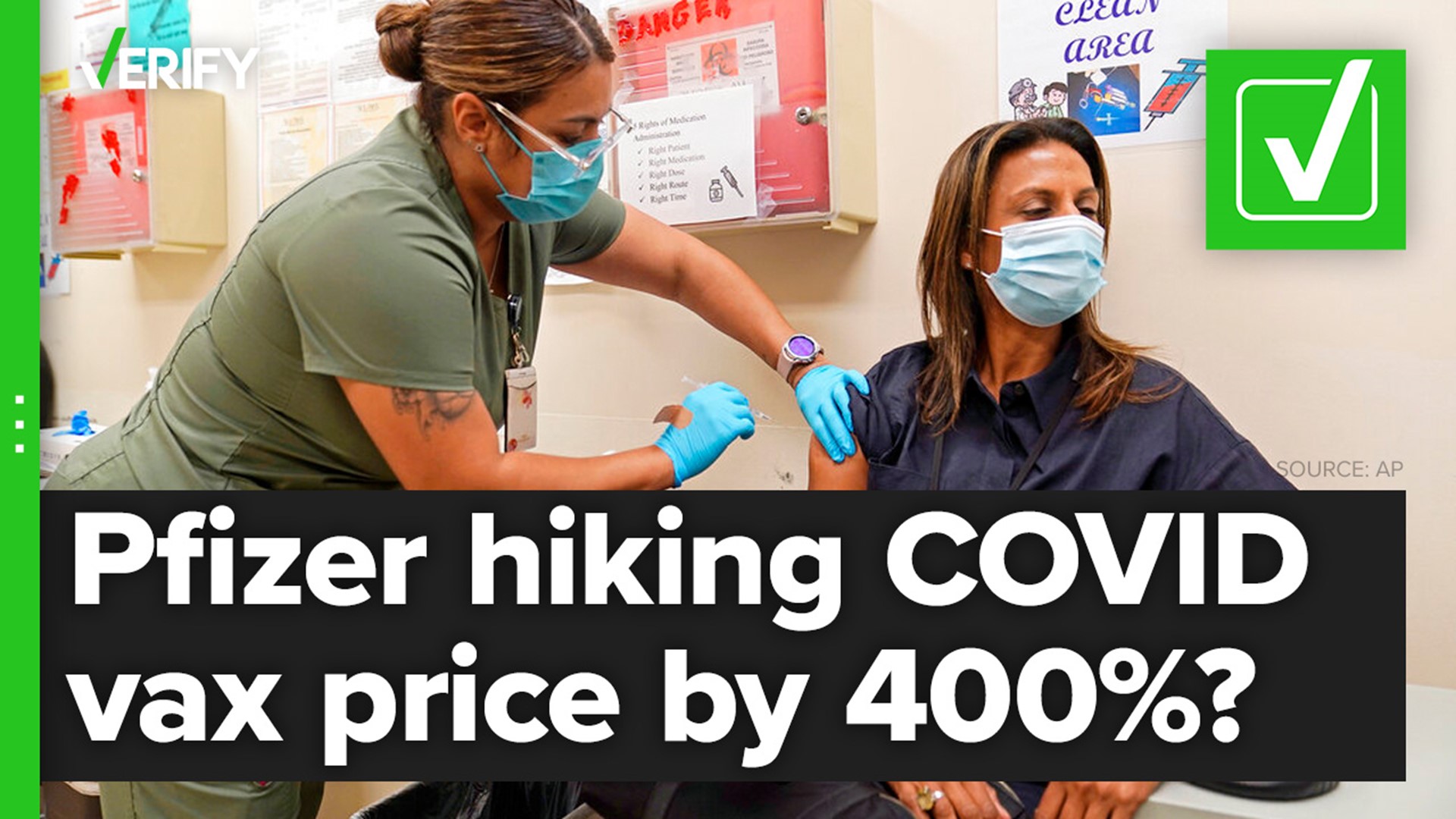Pfizer is one of two companies offering an updated COVID-19 vaccine booster for the BA.5 omicron subvariant this fall.
The shots are currently paid for by the federal government and are available free of charge, regardless of a person’s health insurance status.
Now, in late October, some people on social media are claiming that Pfizer is planning to raise the cost of its COVID-19 shot by 400%.
THE QUESTION
Is Pfizer planning to increase the cost of its COVID-19 vaccine by 400%?
THE SOURCES
- Angela Lukin, Pfizer’s U.S. president
- U.S. Department of Health and Human Services (HHS)
- Kaiser Family Foundation
THE ANSWER
Yes, Pfizer is planning to increase the cost of its COVID-19 vaccine by nearly 400% once the federal government stops purchasing doses. People with insurance will likely still be able to receive the vaccine for free.
WHAT WE FOUND
Right now, every COVID-19 vaccine that’s available or has already been administered was paid for by the federal government. But that’s probably going to change next year.
Congress hasn’t approved the additional funding that the federal government needs to continue paying for COVID-19 vaccines. Once the government’s supply runs out, the “manufacturing, procurement and pricing” of the vaccines will transition to the private sector, where many pharmaceutical products are bought and sold, according to an analysis from the Kaiser Family Foundation (KFF).
Pfizer says it plans to increase the cost of its COVID-19 vaccine by nearly 400% once it transitions to the commercial market, or the private sector, but the shots will likely still be covered by insurance.
This is how many common vaccines, such as the annual flu shot, are distributed. Most insurance companies cover the vaccine at no cost, while people without insurance have to pay out of pocket or rely on low-cost or free vaccine clinics.
During an investor call on Oct. 20, Pfizer’s U.S. president Angela Lukin said the company plans to increase the price of its COVID-19 vaccine to between $110 and $130 per dose when it makes the transition to commercial distribution.
The higher price point will reflect Pfizer’s switch from vials containing multiple vaccine doses to individually-packaged doses and increased costs associated with commercial distribution, Lukin said.
Pfizer’s expected price point for the COVID-19 vaccine is nearly four times – or about 333% – what the U.S. government paid in its latest purchase agreement with the company.
In June 2022, the U.S. Department of Health and Human Services (HHS) announced that it had purchased 105 million doses of Pfizer’s COVID-19 shot at a total cost of $3.2 billion, with the option to purchase more doses later. That equates to around $30 per dose.
The cost of other vaccines in the private sector ranges anywhere from about $20 to upwards of $200 per dose depending on the shot, Centers for Disease Control and Prevention (CDC) data show.
More from VERIFY: Yes, updated omicron boosters were tested on mice, not humans, before authorization
So what about the cost to the average person?
Pfizer expects that anyone who has private or government insurance, such as Medicare or Medicaid, should still be able to get the vaccine for free when it transitions to a commercial market, Lukin said. People without insurance, however, might have a harder time finding free shots, according to KFF.
These changes will likely go into effect at the beginning of next year.
COVID-19 vaccine contracts between Pfizer and the U.S. government continue through the end of 2022, so the transition to the private sector won’t happen until the first quarter of 2023 “at the earliest,” Pfizer leadership said during the October investor call.
In an August 2022 blog post, HHS Assistant Secretary for Preparedness and Response Dawn O’Connell said the Biden administration anticipates that it won’t have the federal funds to purchase or distribute vaccines as early as January 2023.
CORRECTION: VERIFY previously reported that the cost of Pfizer’s vaccine will increase by 400% from roughly $30 per dose to as much as $130. While the cost is expected to quadruple, the actual percentage increase is about 333%. The story has been updated to reflect this change.
More from VERIFY: Yes, the CDC changed its definition of vaccine to be ‘more transparent’

